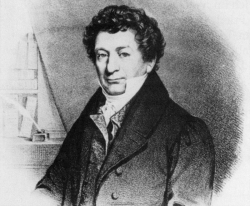Friedrich Sertürner

- Born
- 19 June 1783
- Died
- 20 February 1841 (age 57)
Friedrich Sertürner was a German scientist who transformed the pharmaceutical industry and medicine with the discovery of morphine, the painkiller that's derived from opium in the poppy plant.
Sertürner was born in 1783 in Prussia, now in an area of Germany. He had very limited education but went on to become a pharmacy apprentice. Sertürner was a diligent worker and was already doing his own research at the age of 21. It was then that he first reported on the discovery of a substance in unripe poppy seeds that had sleep inducing properties – the substance he consequently named morphine.
Morphine is present in opium, a highly addictive pain-relief drug obtained from the seeds of the opium poppy plant. At the time of Sertürner's work, raw opium 'juice' from the plant was given as a drug against pain. However, in this basic state the opium was very potent and varied in strength from batch to batch. It made opium a danger to prescribe as high quantities caused some patients to die.
Sertürner set out to identify the active component within opium that was responsible for reducing pain. After lengthy experimentation, at the young age of 21, Sertürner successfully isolated a white crystalline, alkaloid substance, which he described as the "sleep-inducing factor" of opium. Sertürner named it morphine after Morpheus, the Greek god of sleep. This was also the first time someone had identified and isolated a single active ingredient from a medicinal plant.
Sertürner had isolated perhaps the most pivotal substance in the field of medicine. Morphine enabled the advance of many surgical procedures which were previously too excruciating to carry out. Sertürner began distributing morphine in 1817. Ten years later pharmaceutical companies started marketing the product, which is now sold under nearly a hundred brand names throughout the world and is widely used for managing severe pain.
After publishing the report on his discovery, Sertürner shot to fame and quickly gained recognition for his work. In 1817 he received an honorary doctor's degree from Jena University in Germany and later similar honours from the Universities of Marburg, Berlin, St. Petersburg, Batavia, Paris, and Lisbon.



